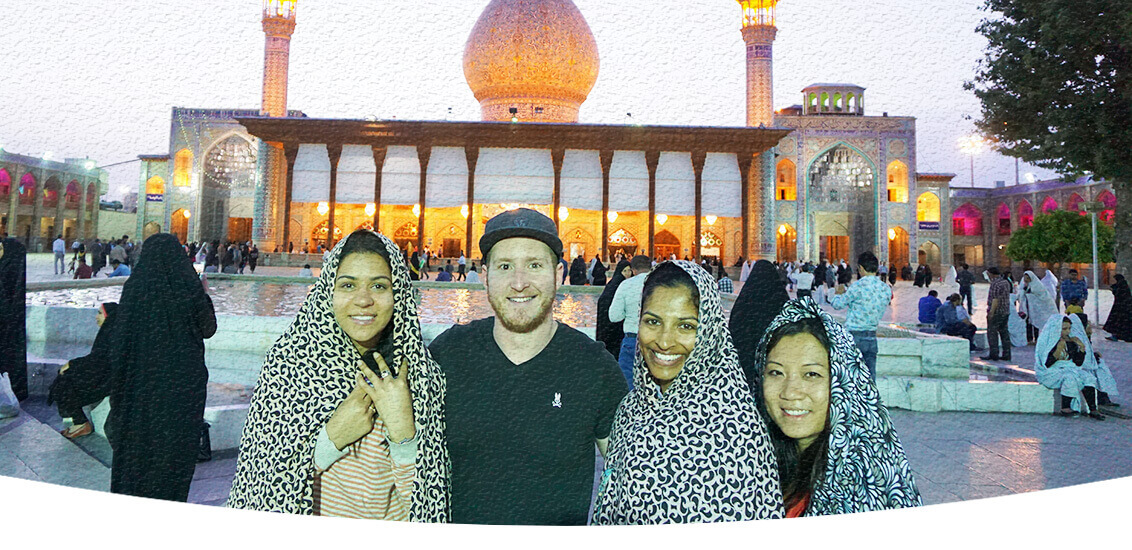
Dress Code in Iran
“How shall I dress in Iran?” is one of the first questions for tourists to ask themselves when they make their decision to travel to Iran. Tourists, especially women, usually think about how they have to cover their hair and body when visiting Iran. Here are some information and tips to give you a peace of mind to enjoy your trip to Iran the best.
According to Islamic rules, Muslim women shall cover their hair and their body from male strangers called “Na-Mahram” in Islamic talks (We don’t really want to go into details here). The hair is expected to be covered with headscarf and the body with long and loose-fitting wears like “Manteau” or “Chador” in public places. However, rules are not always followed strictly. In Iran, as a tourist or foreigner, you are expected to follow the country’s dressing codes, but not word by word and as it’s mentioned in the book of the law. No matter you are a man and woman, if you follow some small tips, you won’t have any problem in Iran.
Men:
Iranian men usually take good care of their appearances and look stylish. Their style can vary from a simple T-shirt with jeans or cotton pants to long-sleeved linen and cotton shirts with suit pants. It goes without saying that suits are their first choice for formal meetings and occasions.
Probably, it’s easier for men to choose their outfit in Iran as it can be a simple casual T-shirt with cotton pants matched a pair of hiking sandals or running shoes best for sightseeing and strolling. Shorts and sleeveless shirts are better to be avoided in cities and public places as they are not really accepted in the public eye.


Women:
Same as Iranian men (and even more), Iranian women try to keep up with the latest fashion trends harmonizing them with country’s dressing rules. There are quite a few options for women to choose from as their outfit.
Veil and headscarf:
Muslim women shall cover their hair with hijab. This hijab varies from a veil, a headscarf a pashmina to chador (full hijab). Hijab is obligatory in Iran and all women, including the lady tourists shall abide by this rule. The hair cover has actually a big role in the style of ladies in Iran. There are a hundred models with numerous colorful patterns and materials Muslim ladies can pick as their hair cover. Another point you don’t need to worry about is cover your hair fully. As far as you have the veil scarf around your head and your neck (even you can fix it on your hair with two snap barrettes (just a little advice!)), you can feel free going around.

 Chador:
Chador:
A lot of Iranian women who are more religious prefer to wear “chador” as their hijab. Chador is made of a special usually black fabric and exists in different plain or patterned designs. “Chador” is especially popular in some religious cities such as Qom and Mashhad and in holy places and shrines. In many holy shrines, women are supposed to wear Chador for visiting and going into these holy places which will be given to them in the entrance (and they are supposed to return it before leaving the place). These light-colored chadors are called “Cahdor Goldar”, with flowered fabric.
Manteau, Tunic or Cardigans:
Manteau (a long-sleeved short or long dress usually buttoned up) is the first popular dress among Iranian ladies. In Iran, you can find hundreds shops for manteau in different colors and designs. Tunics and cardigans are better options for tourist ladies as far as they cover up the bum. These options are good as they simply cover your arms and shoulders and you can simply set them with a pair of jeans (regular or skinny) or any other type of pants as far as it is long enough to cover down to your ankles. No need to say that your shoes or sandals shall be comfortable enough for day sightseeing and strolling.




Outdoor and Indoor dress code:
All we said so far is about your outdoor dress choice in Iran (even preferably, in the lobby of hotels). In your room and guest houses or even in the mountains, you don’t need to have the cover around your head.
Final word:
We all know that when we are invited to a ceremony, we are expected to have special wears for that occasion. A new country is not an exception. Iran has its own rules and regulations which are to be respected by its own people and any visitor. You may find the dress codes we mentioned here hassling somehow (especially for the ladies), but most people usually get used to it after a few days and enjoy their trip.
Related Tags:




We love to hear your comments